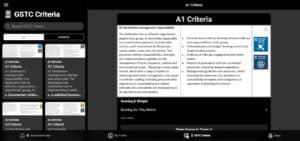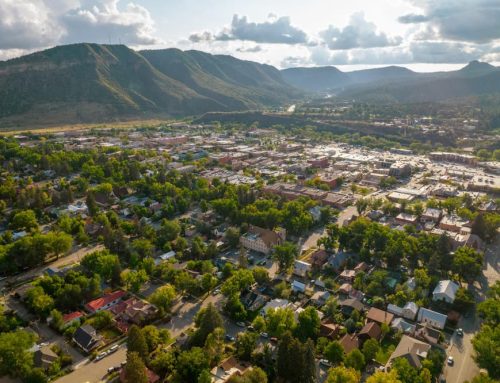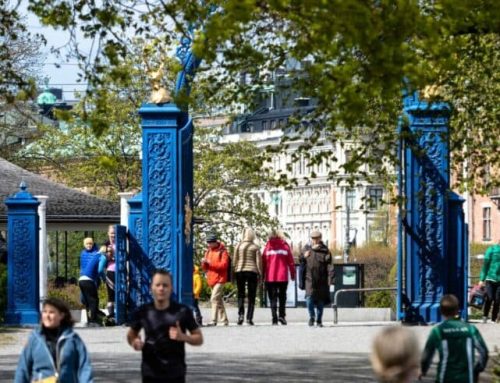Destination Stewardship Report – Spring 2021 (Volume 1, Issue 4)
This post is from the Destination Stewardship Report (Spring 2021, Volume 1, Issue 4), an e-quarterly publication that provides practical information and insights useful to anyone whose work or interests involve improving destination stewardship in a post-pandemic world.
Assessing the sustainability of destinations and acting on the findings can be a complex, expensive task. Dave Randle explains the workings of a new app that his Blue Community Consortium underwrote to assist with that process. Some university students gave the app’s first step, assessment, a revealing field test on seven Florida destinations. Here’s what the app does, and what the students found.
New App to Assess Sustainability of Tourism Communities
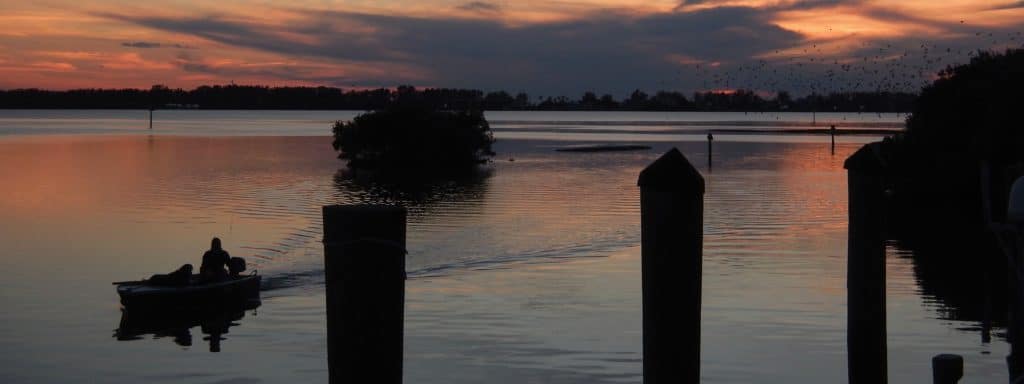
Backwater lagoon at sunset near Anna Maria Island, Florida. Photo: Jonathan Tourtellot
For the past ten years, the Blue Community Consortium, a not-for-profit organization, has provided an opportunity for coastal communities, businesses, and organizations to declare their own work to protect, enhance, and restore coastal habitat and marine environments through their sustainability efforts. To make it easier for communities to achieve this, Blue Community with its Chief Technology Director, Justin Farrow, as the lead developer, and in collaboration with the University of Central Florida, have created a new app to help destination communities assess, manage, and monitor their sustainability.
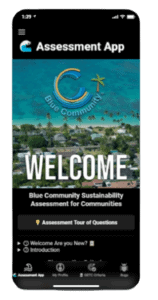
The key features and functions of the app include:
- Ability to collect all sustainability data in one app.
- Ability to monitor progress of desired outcomes and track milestones.
- Real-time editing of sustainability data for any community or destination in the system by designated team members.
- Custom app experience for each destination. The app allows for the community or destination to include their logo along with special questions and custom-designed stakeholder features.
- Ability to designate an assessor’s team for any community or destination including multiple role levels for editing criteria data.
- Stakeholder role, which will allow viewing the latest data, providing comments for feedback, but not editing.
- Online integration of GSTC Criteria with the assessment experience.
- Integrated Sustainability Dictionary.
- Video guides on how to use the app.
- Ability to use paperless administration for assessments, monitoring, and evaluation.
- Ability to push data changes to blockchain for more accuracy and transparency.
Initial community assessment – a test
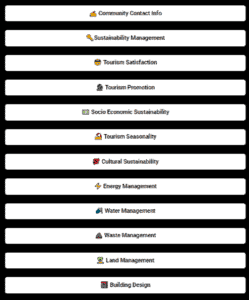
The assessments aimed to see how each city compared to one another and to highlight each city’s strengths and challenges, as well as the areas to be improved upon. Highlights of the app’s findings:
- Despite Florida being an ideal climate for solar, less than 2% of energy from any city is coming from renewable sources.
- There is a vast difference in the percentage of water being reclaimed in the seven cities, ranging from 22% to 100%.
- The percentage of waste recycled ranges from 10% to 79%.
- Only 4 of the 7 cities had plans to protect biodiversity and only one had plans to manage visitors.
- Sustainable food findings were that six of the seven cities had programs to source local food, compost food waste, and support local farmers’ markets.
- Only two of the seven cities had 50% of their marinas certified as clean marinas, and none of the cities had more than 50%.
This first step, sustainability assessment, calls for developing an assessment team and/or partnering with a college or university to complete the questions in the app. Different individuals can be assigned editing privileges for one or more sections of the app. This allows for the sharing of the workload and for engaging larger numbers of people in the process from the very beginning.
Below are the next steps a destination might take in using the app to improve sustainability management.
Step 2. Make the sustainability assessment the baseline for developing an online sustainability management plan.
Through a separate software program developed by our partner One Planet Living, the data from the app allows communities to set realistic goals and outcomes along with action plans, timelines, and indicators for success.
Step 3. Monitor the progress of the plan and update the data on a regular basis – monthly, quarterly, or annually depending on the specific data being monitored.
For example, things like energy, water, and waste might be monitored on a monthly basis where other data might find that quarterly or annual monitoring is sufficient. Different people in the destination community can be tasked with updating the data in the app for each of the different sections. In some cases, the team might want to use blockchain technology. By linking the app to the blockchain, information on areas such as energy, water, and waste usage, amount of waste recycled, amount of waste sent to landfill, etc. is automatically updated with each utility billing cycle.
Step 4. Turn on the stakeholder feature once the initial sustainability plan is completed, so that residents, visitors, and others can view progress and submit comments and suggestions to critique and improve the plan.
This allows every interested party to become part of the sustainability plan and to contribute to its success. It also provides for greater ownership. Many of the questions in the app call for examples of how the community is achieving sustainability. Stakeholders will be able to verify such reporting and suggest additional examples that they witness.
Step 5. Use the app to better manage sustainability efforts.
The app allows an instant look at various sustainability issues in the community. At any given time, the Sustainability Manager or team can look at the app and have the necessary data at their fingertips to see progress in any given area from the baseline to the most recent entry.
Step 6. Evaluation, Renewal, and Extension.
The app provides an ongoing evaluation whenever any of the baseline data questions are used for indicators in the community or destination plan.
Step 7. Annually review the answers in the assessment and modify the sustainability plan as needed, repeating the process for the following year. The annual results provide the basis for a report to stakeholders and renew efforts to continue the process.
Information support To help with these steps, the app also features informational resources such as:
- The Global Sustainable Tourism Council (GSTC) criteria.
- The ten One Planet Living Principles to reduce carbon and ecological footprint.
- The 12 Blue Community Strategies co-developed with the Walt Disney Company Animal Science and Environment Team.
- The 11 core issue areas that the UNWTO International Network of Sustainable Tourism Observatories are required to monitor.
- Policy review according to the science of the Nine Planetary Boundaries.
Utility of the App
The app can be used by any destination at any scale and can be accessed through any browser or device. There are many benefits of using it – more comprehensive sustainability planning, better monitoring, greater community engagement, more accurate and transparent reporting, and more achievable outcomes.
For questions on the app, please contact Justin Farrow, Chief Technology Director, at blue.community.info@gmail.com.
About the Author
David Randle is the Managing Director of the Blue Community Consortium and President & CEO WHALE Center.


